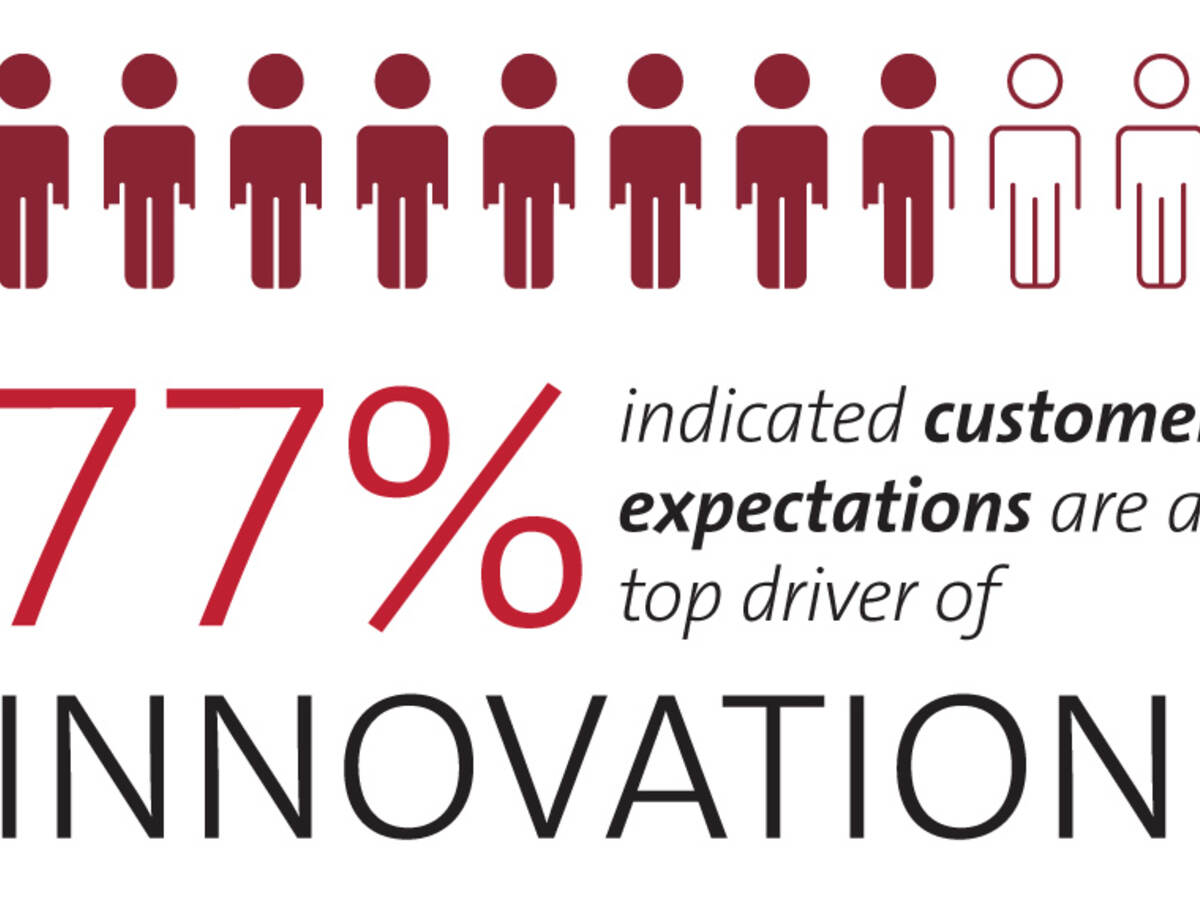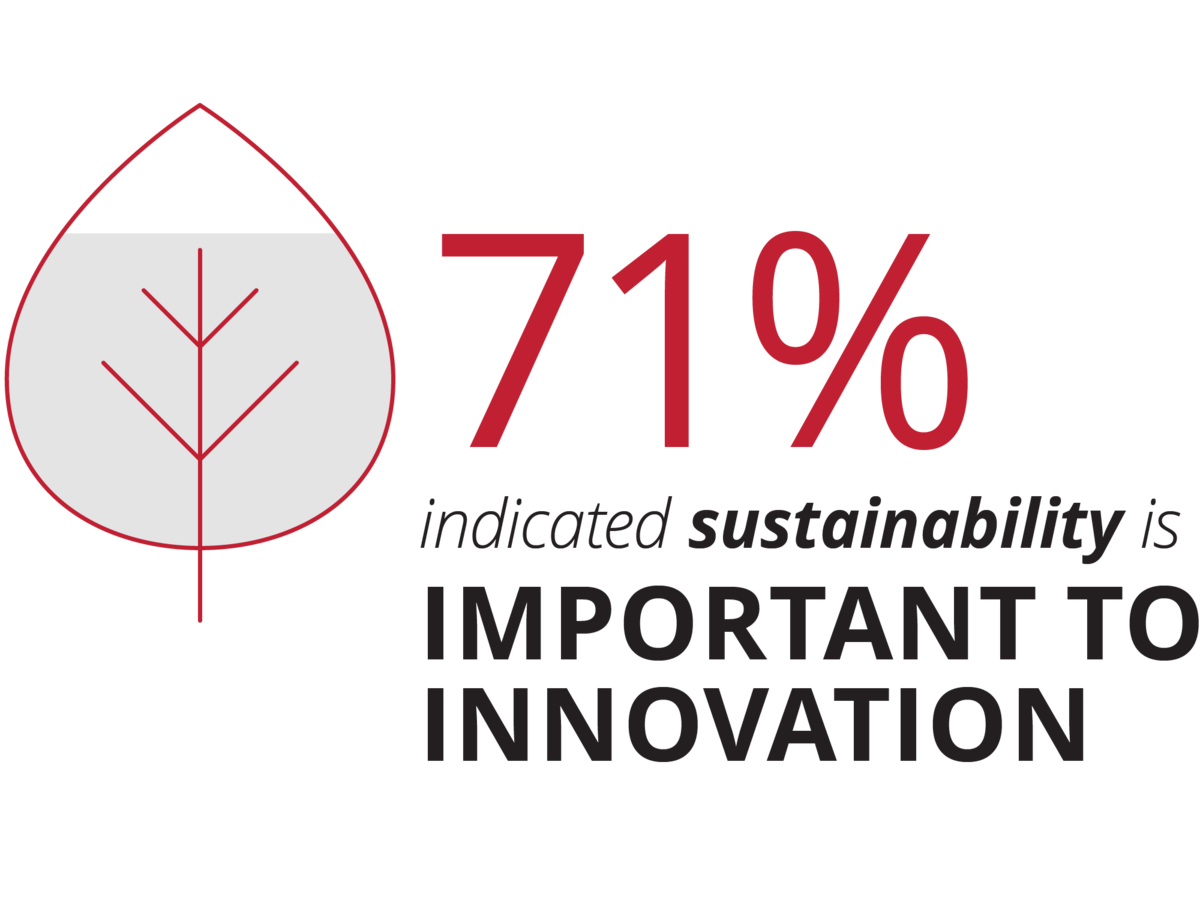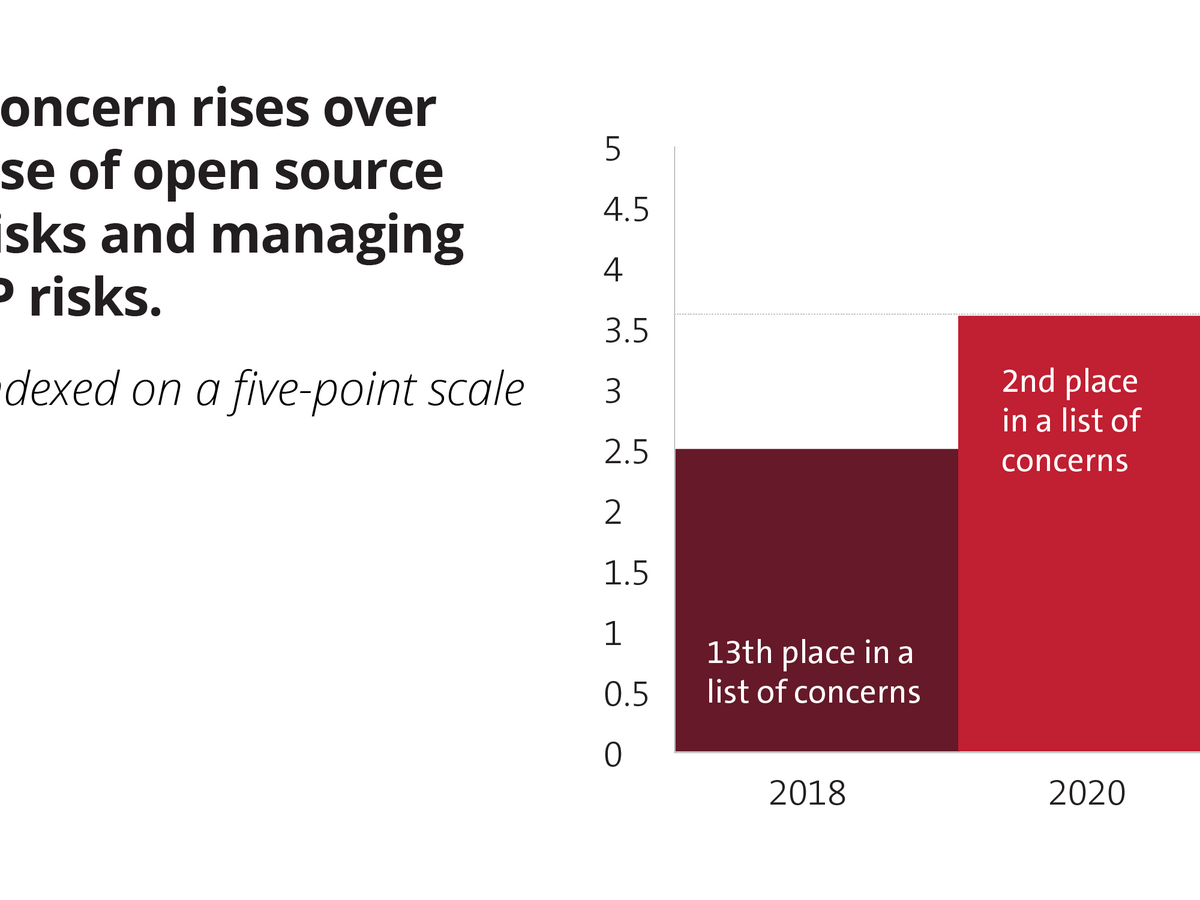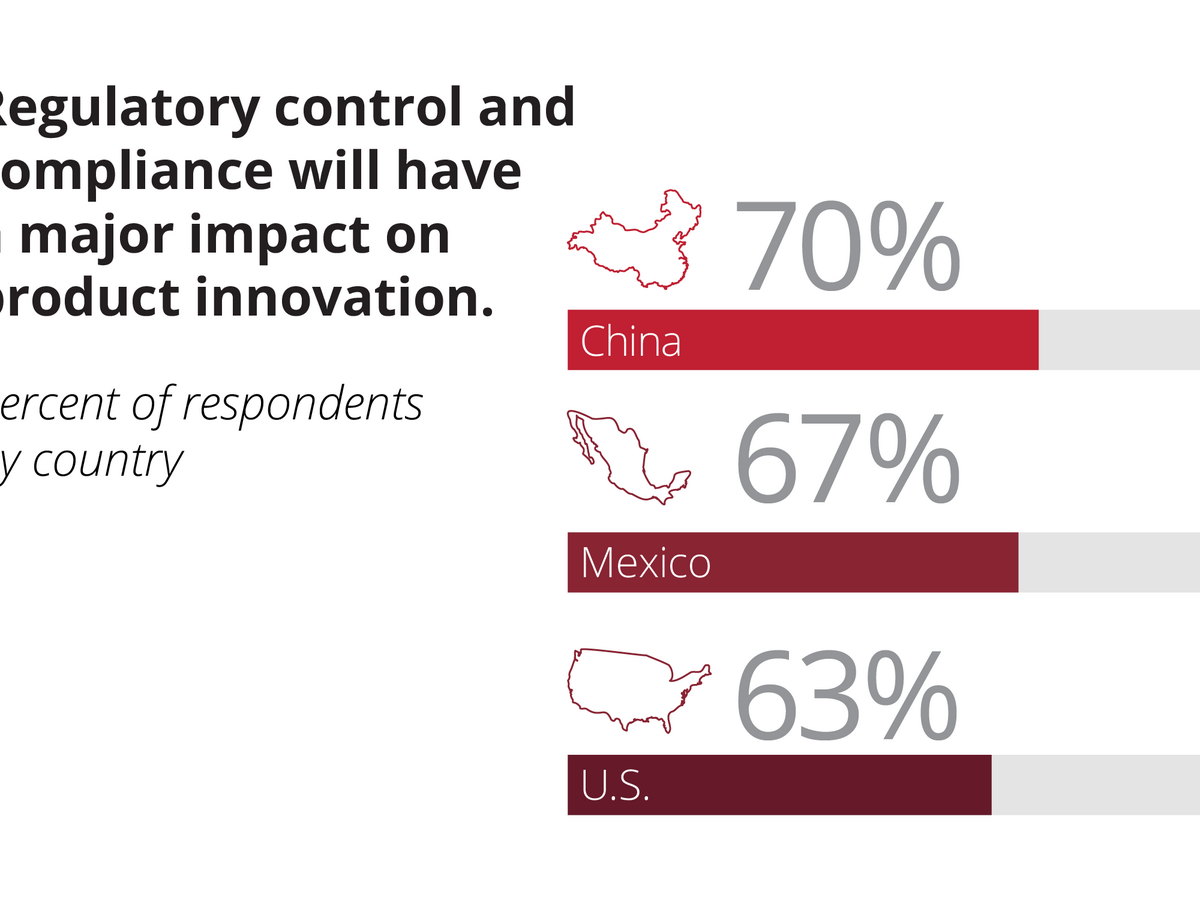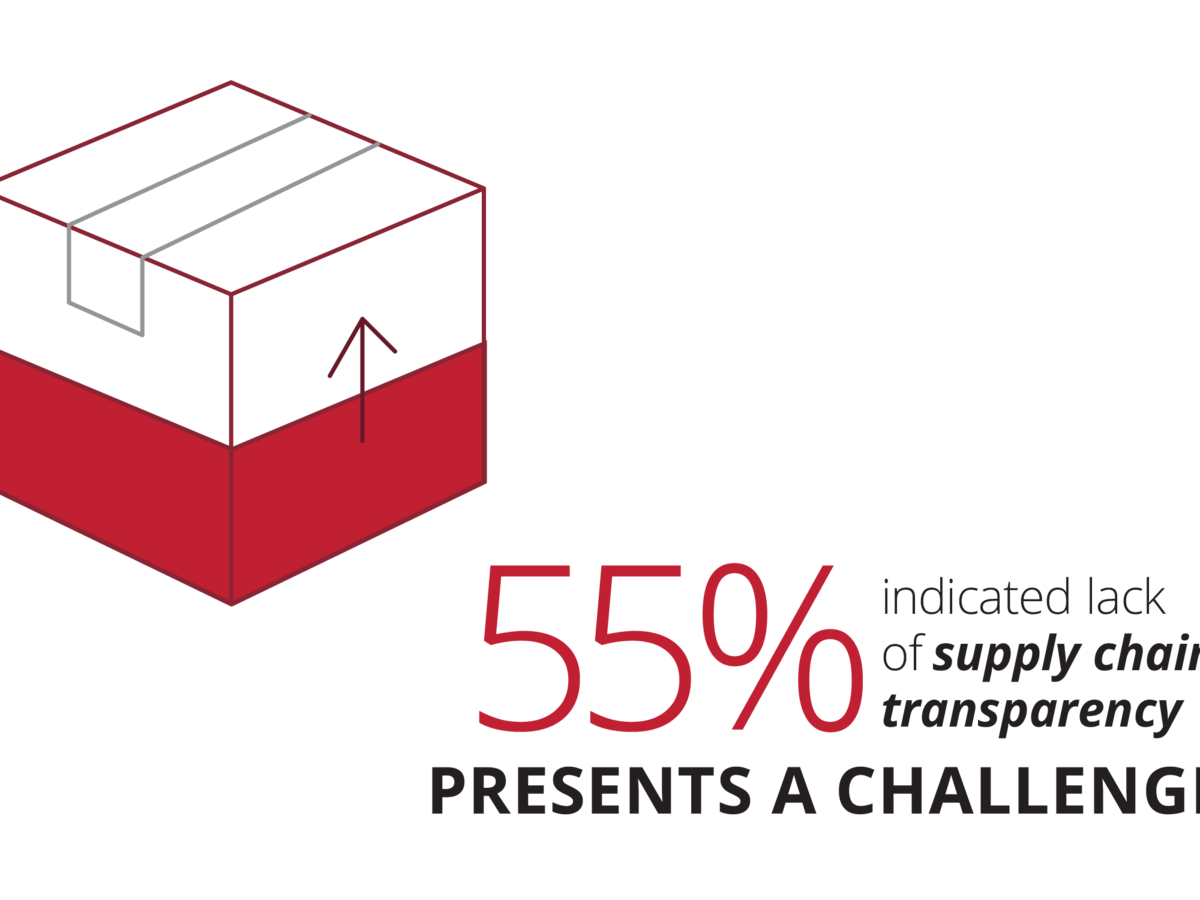Innovation and safety are critical to successful brands. Innovation drives progress to meet the demands of a new age: demands like connectivity, sustainability and performance. Safety underlies the foundation of all things, ensuring products and services support human and environmental health. In an increasingly complex world, forward-thinking businesses strive to optimize both innovation and safety.
UL is committed to researching and sharing insight into companies’ approaches to innovation and safety. Responding business executives revealed discrepancies in the stated importance of these issues versus the level of resources dedicated to them in their organizations. Leaders also expressed uncertainty regarding the role of emerging technologies. The previous research study, The Nexus of Innovation and Safety, examined top trends and where innovation and safety intertwine to gain efficiency and a more comprehensive view of product performance. With that study as an initial benchmark, UL continues to track trends in innovation safety, examining new trends, challenges and directions as we enter a new decade. This 2020 report shares the latest findings.
Top 5 trends in innovation safety in 2020
1. Customer expectations are the top driver of innovation
Companies are looking to market needs and demands to shape their new products and services. Brands thrive on innovation and it’s essential to ensure continued viability. In the information age, customers are more likely to know what’s possible and what they want, making their input vital to successful innovation.
2. Sustainability surges on list of priorities
The importance of sustainability considerations in innovation is a strong indication that sustainability regulations are no longer theoretical, but are in place and impacting businesses today. Jumping from No. 15 (2018) to No. 3 (2019) on the list of important drivers in innovation, sustainability is a clear priority for businesses.
3. Cybersecurity emerges as a top safety concern
When asked to rate the importance of critical safety challenges, concern over use of open source risks and managing intellectual property (IP) risks ranked an insignificant 2.58/5.0 in the 2018 survey, but jumped to 3.6/5, second place, in the 2019 survey.
4. Regulations impact business in significant ways
Respondents agreed that regulatory compliance is a key societal change that will impact innovation. Speculation about the role of regulations is over. They are in force and companies are actively moving to ensure compliance, structuring internal teams to help guarantee success.
5. Lack of transparency still plagues businesses
Lack of supply chain transparency is still a challenge for most companies, indicating that more work is needed. The call for increased transparency will require technology and attention as companies resolve to work more closely with suppliers and partners to achieve true visibility.
Examining regional differences
Regional differences were significant, specifically with regard to respondents’ attitudes about the impact of new technologies and societal changes on their businesses. Respondents in Asia and South America are much more inclined to feel as though they clearly understand the implications of emerging technologies on innovation.

![]()
Sources of innovation and safety inspiration
With so many factors to consider, companies approach innovation in different ways. Here are some of the top resources and tools they employ.
- 77% Customer collaboration
- 75% Supplier collaboration
- 72% Competitive benchmarking
- 70% Separate facility/laboratory dedicated to innovation
- 62% University/other external
![]()
Challenges to innovation
Here are some of the major challenges as perceived by survey respondents.
- 66% Changing customer demographics
- 63% Concerns with managing IP risks
- 63% Rapidly evolving regulations
- 60% Budget/earnings pressures
- 59% Variability in digital maturity of suppliers
Looking forward
Uncertainty looms on the road ahead
Interestingly, while confidence in innovation processes is growing, executives expressed some uncertainty regarding the road ahead. Fewer than 47% believe that their global approach to innovation will meet the market needs of tomorrow. A seemingly contradictory sentiment, these disparities are not necessarily difficult to explain. While companies are in the middle of deploying new technologies and processes to reshape innovation, at the same time, they see a tide of change coming with the fourth industrial revolution that is so sweeping and significant that everything is about to change. Some open-ended responses reflect this notion of an overwhelming technology revolution that is currently underway and will continue to take place, greatly challenging businesses’ abilities to keep pace.
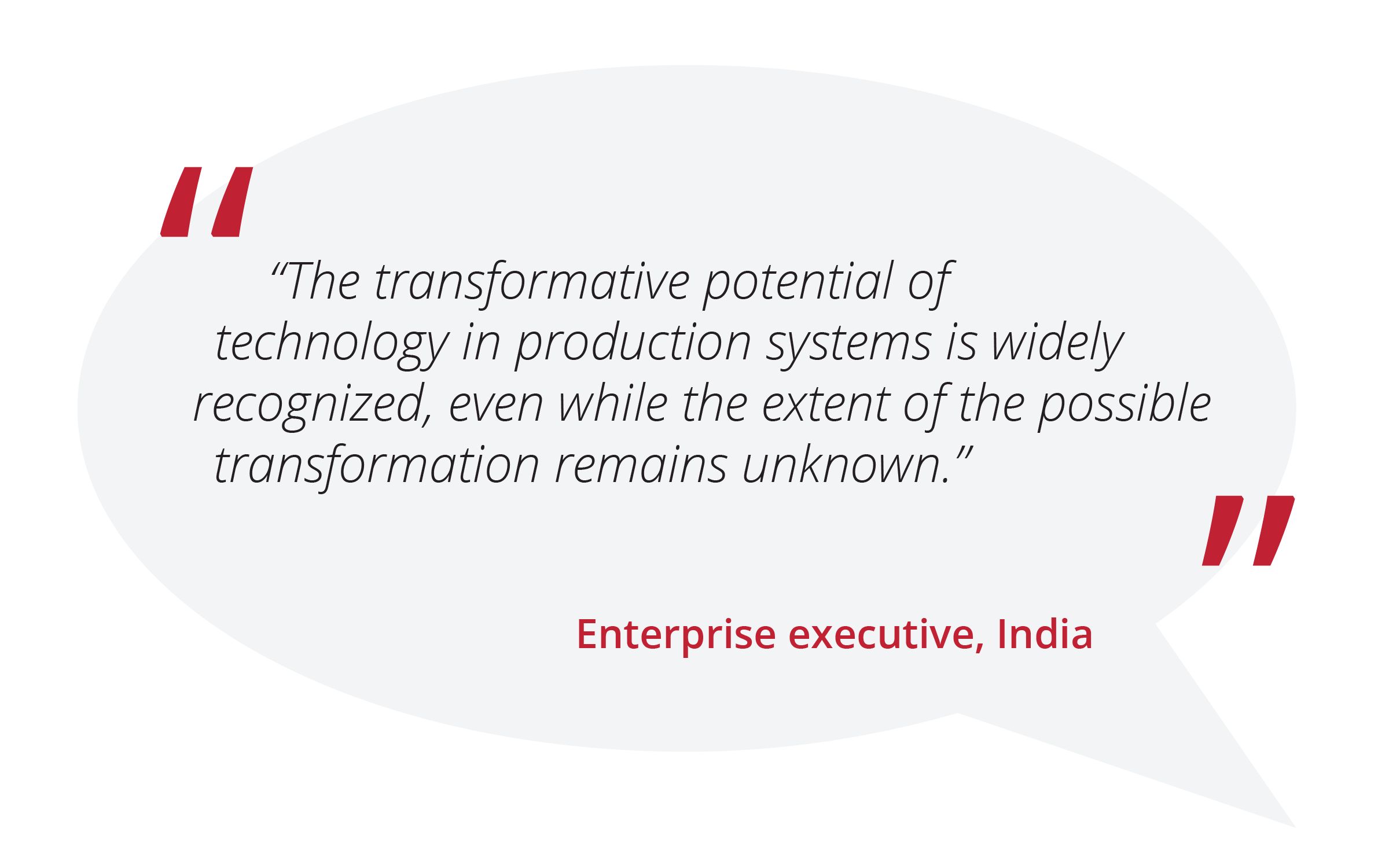
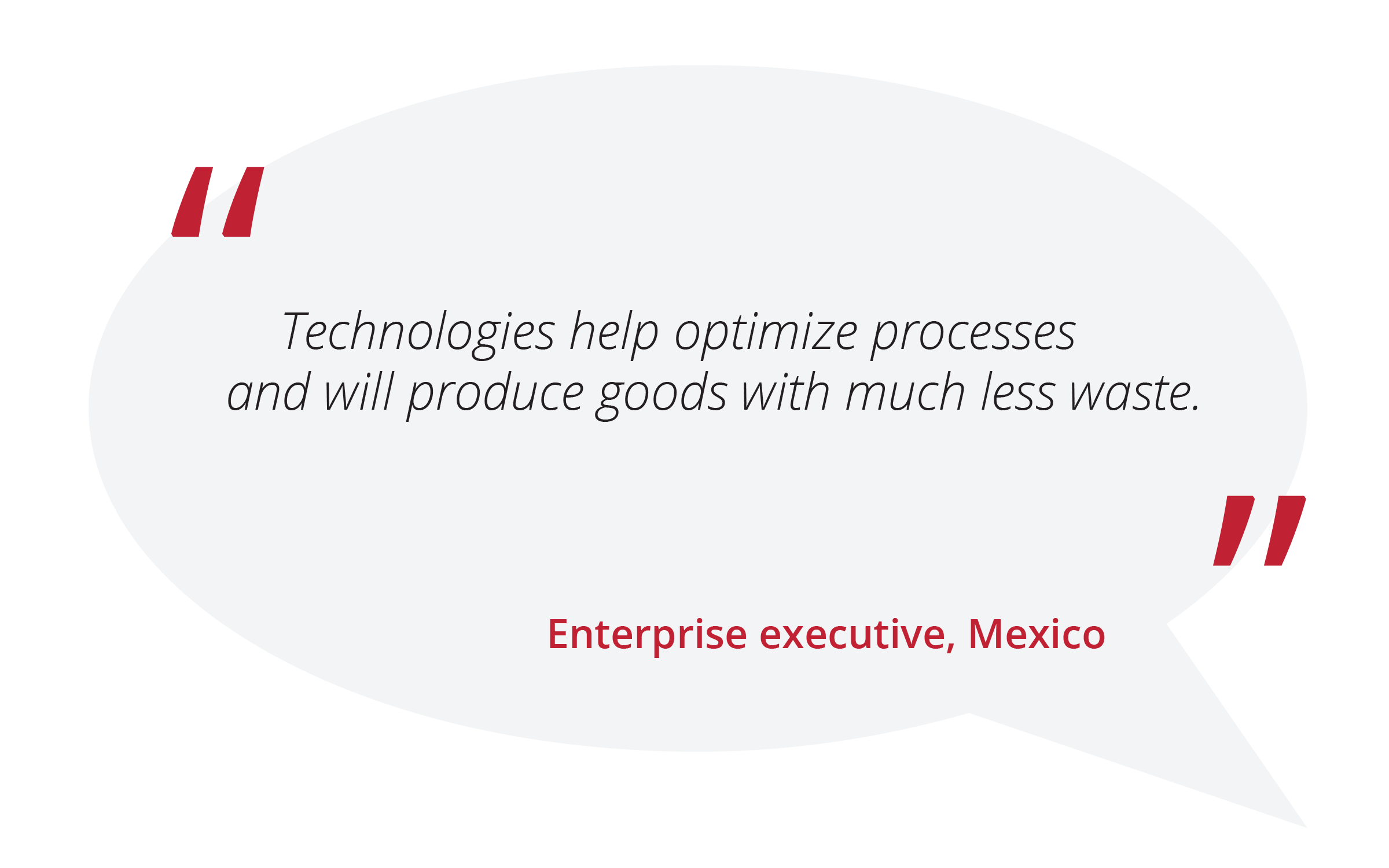
The path forward is sustainable
Concern for the environment has reached a pinnacle and is at the forefront of stakeholders’ considerations across all businesses and industries. Local, regional, national and global regulations are growing in force and number, pressing businesses to reduce their carbon footprint. Technologies will enable resource optimization, consolidation and accurate reporting of critical environmental performance data. Comments suggest executives are looking to technology to drive sustainable business efforts.
No silver bullet solution for security
No two companies follow the same path to digital transformation. From cloud technology to third-party programs, companies are investing in a broad spectrum of technology solutions. This hints toward the fact there is no silver bullet solution to optimize innovation safety. Companies have more tools and technologies than ever that can be leveraged to accomplish their business objectives and they are employing combinations that are unique to their industry and specific business. This can be challenging as there is no pattern to follow, but it also encourages companies to find their own winning formula and suggests there is more than one path to success. When asked what tool and technology investments are being made by organizations to jointly address needs for innovation and data security, the responses were diverse:

Cybersecurity is a growing problem
The importance of cybersecurity is growing in an age of connected devices. In a study released by UL in 2019, nearly half (48%) of companies are unable to detect cybersecurity breaches when they occur. At the same time, a growing number of companies are grappling with cybersecurity and data breaches that cause irreparable damage to their brand and erode trust, with 42% of companies reporting that they have experienced a direct breach. The time to shore up cybersecurity is now, and companies are prioritizing their efforts to ensure security and trust. The larger the company, the greater the investment in resources dedicated to innovation informed by security and/or cybersecurity initiatives.
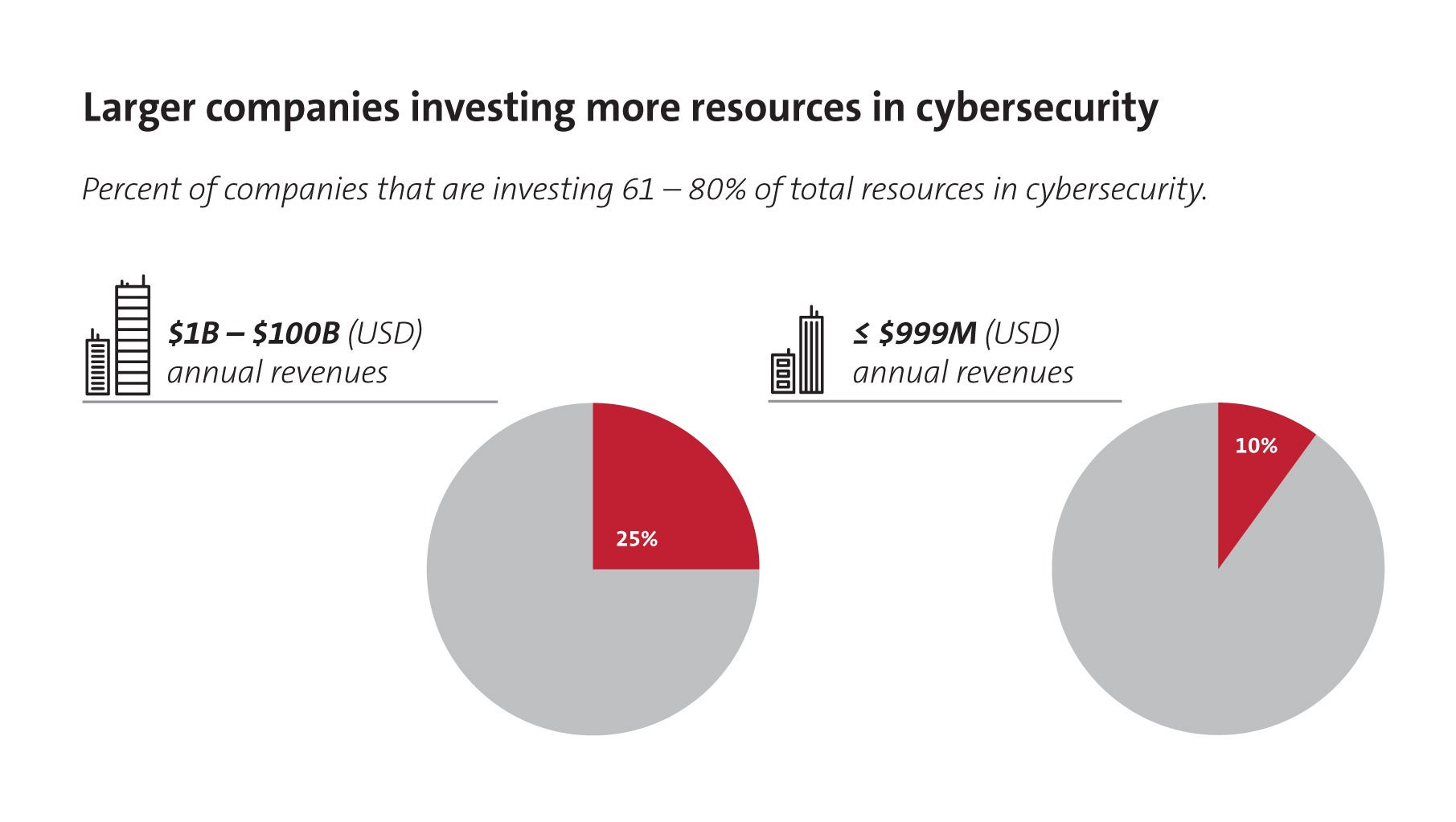
Supply chain transparency continues to be a priority
As companies strive to continually improve their innovation safety, supply chain transparency will be essential. In the survey, 59% said a significant challenge to innovation is variability in the digital maturity of suppliers and 57% cited volatility of the global supply chain as a major challenge to innovation.
The good news is executives are looking to new technologies to provide greater visibility and easier collaboration with supply chain partners. A list of technologies that will have a major impact on companies’ approaches to innovation cited blockchain, a powerful technology, at No. 4, which features primary use cases for supply chain management and tracking.
A majority of respondents from China, 73%, indicated AI enhancements will deliver increased transparency and traceability in the supply chain. Companies’ abilities to achieve greater supply chain transparency will, in turn, enhance their ability to achieve greater levels of sustainability, compliance and risk management
Conclusion
Innovation safety advances will enable the swifter, safer introduction of products and services to market. Companies that continue to press forward with solutions and processes will benefit from growing trust in their brands.
Download the Innovation Study
Innovation Safety in a New Decade: 2020 explores the latest trends, challenges and practices in innovation safety.





